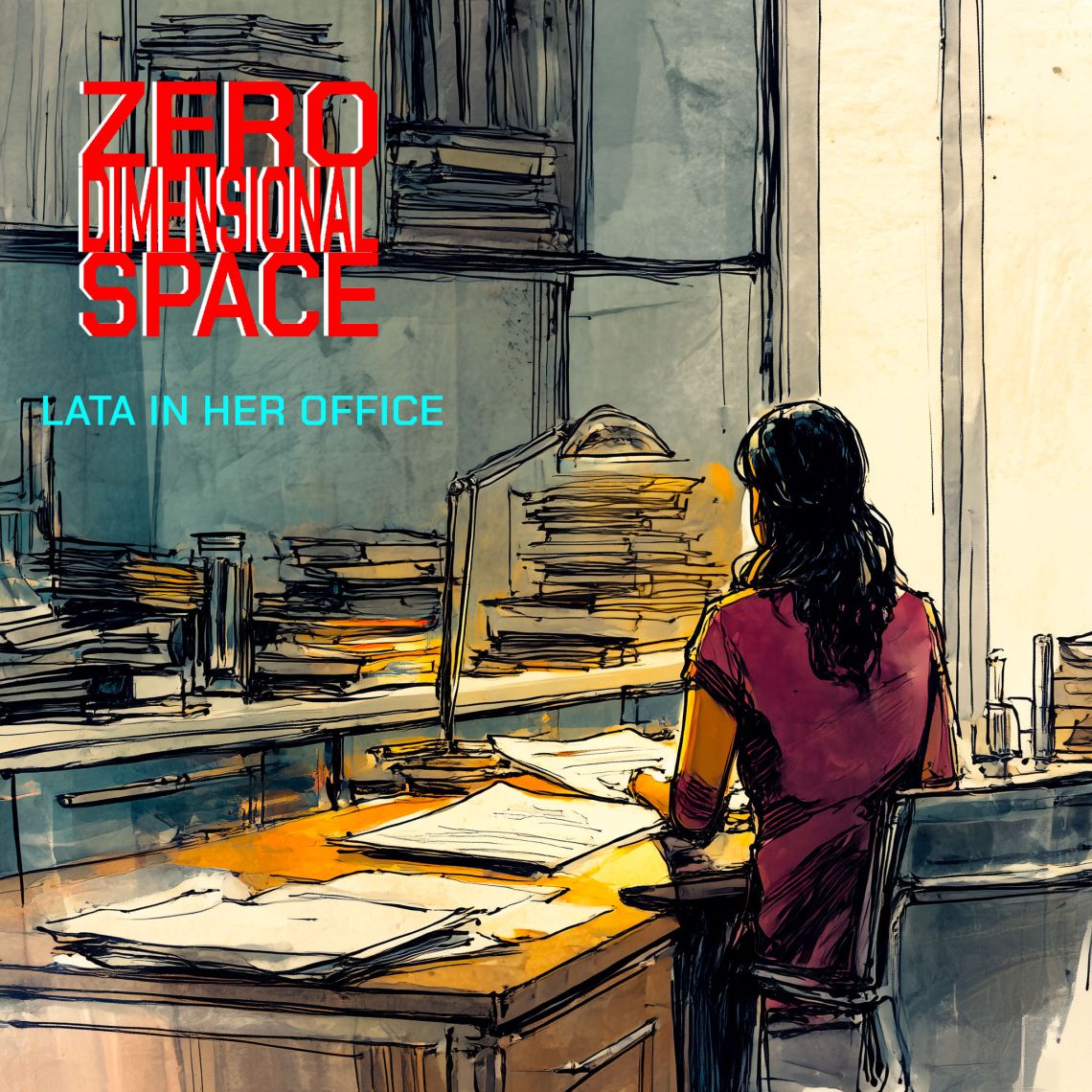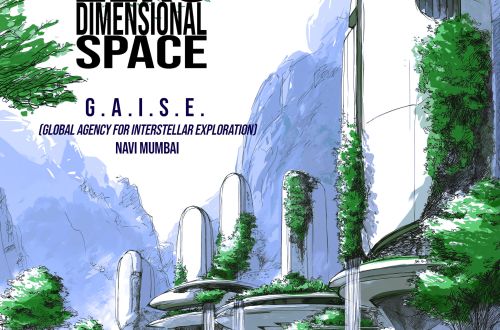I don’t think Rajeev’s secretary understands what’s sitting on my desk. For weeks I’ve been sending papers, abstracts, and “short write-ups” to help her “brief him when he has the time.” Each time I send one, another request comes back. He’s a busy man, I know—but this isn’t a Mars rover status update. This is the kind of thing that should have had me in his office the day it landed.
<Diary Entry/ Lata’s personal log>
Transcendent Mind’s quantum connection: Penrose-Hameroff “Orchestrated Objective Reduction” theory
This hypothesis is inspired by the Penrose-Hameroff “Orchestrated Objective Reduction” theory, which suggests a connection between quantum processes in microtubules within brain neurons and the phenomenon of consciousness. What if this relationship is bidirectional? If quantum processes contribute to consciousness, could a sufficiently advanced state of consciousness influence the quantum realm?
For decades, science fiction has explored the concept of faster-than-light (FTL) travel, often proposing solutions like warp drives that warp spacetime or wormholes that create shortcuts across the cosmos. These concepts often depend on exotic physics, exotic matter, energy, and advanced technology. However, an alternative and perhaps more profound approach might lie within the very nature of consciousness itself.
This concept explores the intersection of consciousness, quantum mechanics, and FTL travel, grounded in speculative physics rather than traditional engineering. It proposes that a highly evolved state of consciousness, often described as enlightenment or profound mental stillness, could be the key to interstellar travel.
The Zero Dimensional Jump: A New Model for FTL
The core of this theory posits that a profoundly still mind, functioning as an ultimate observer, could influence the quantum field. In this state, the constant, random fluctuations of virtual particles—the “shimmering probabilities” of quantum existence—might momentarily cease within a specific radius. This is not an active manipulation, but rather a state of being that acts as a catalyst, creating a pocket of quantum stillness. The enlightened being exists in their state of supreme bliss, devoid of desires, caring little about the effects on the quantum fluctuations, making the whole endeavor passive in nature.
Within this neutralized quantum field, a spacecraft could be engineered to temporarily slip out of our familiar three-dimensional reality. As the threads of space and time loosen, the vessel could enter a state known as Zero Dimensional Space—a realm without length, depth, time, or entropy. In this state, the ship remains in stasis, while the universe outside continues its spatial expansion. When the influence of the conscious observer ends, the ship reappears, having traversed vast distances instantly by “hitching a ride” on the universe’s own spatial expansion.
This is not about bending spacetime or creating shortcuts. Instead, it is about momentarily stepping outside of it. It is not just a smarter Euclidean higher dimension, but a state of profound nothingness. The “Zero-Dimensional Jump” is a concept that is elegant in its simplicity, requiring no exotic fuels, but a specific mental state and a vessel designed to harness its effects.
Zero Dimensional Space: It May Really Exist
Zero Dimensional Space isn’t just a narrative device—it may be a precise theoretical framing of a phenomenon already known to human experience. Across cultures and centuries, people who have entered deep, sustained meditative states describe a strikingly consistent condition: the collapse of time, the absence of space, and the emergence of pure nowness—a state of dimensionless presence where thought, movement, and identity fall away. In every tradition, across every language, this experience recurs. There is no up, down, past, or future. Only this. Only now.
Science may choose to dismiss these states as internal illusions or unquantifiable neurochemical events. But if science begins with observation—and if all observation depends on consciousness—then such universally reported experiences should be treated not as poetic artifacts, but as data of another kind.
Zero Dimensional Space, as proposed in this model, is not a fantasy but a reinterpretation of what meditators across time have already touched. It isn’t metaphor. It may be structure—momentarily revealed when the observer steps outside the dynamic scaffolding of thought.
What’s radical here is not the invention of a new physics, but the recognition that physics may already be glimpsed from within. The idea that the mind, when perfectly still, reveals not a dream but the contours of spacetime itself—stripped of motion, direction, entropy, or dimension.
No Chosen Ones
And most importantly: there is no chosen one, no superhero, no divine emissary. The ultimate truth is that any human being can reach the highest state of consciousness. But doing so requires what may be the single most difficult act in the entire human experience: letting go.
Not striving. Not mastering. Just releasing.
The mind must abandon its narratives, identities, ambitions—everything it clings to. It must do what it was never trained to do: stop. And yet that is the key. Enlightenment is not conquest. It is surrender. It is the paradoxically simple and unreachable state that enables Zero-Dimensional detachment.
My book, Zero Dimensional Space, delves deeper into this radical concept and is available now. It envisions a future where India’s groundbreaking discovery of consciousness-driven FTL ignites a fierce new space race. As nations vie for interstellar dominance, the stakes escalate beyond technological advancement to include subterfuge, espionage, eco-terrorism, and the shadowy realm of artificial consciousness. I invite you to explore this thrilling new frontier of speculative physics.
1. Penrose-Hameroff Orch-OR Theory (Consciousness & Quantum Mechanics)
- Penrose, R. (1994). Shadows of the Mind: A Search for the Missing Science of Consciousness. Oxford University Press.
- Hameroff, S., & Penrose, R. (2014). “Consciousness in the universe: A review of the ‘Orch OR’ theory.” Physics of Life Reviews, 11(1), 39–78.
https://doi.org/10.1016/j.plrev.2013.08.002
2. Quantum Fluctuations & the Vacuum Field
- Milonni, P. W. (1994). The Quantum Vacuum: An Introduction to Quantum Electrodynamics. Academic Press.
- Dirac, P. A. M. (1934). “Theory of Electrons and Positrons.” Nobel Lecture.
- Casimir, H. B. G. (1948). “On the attraction between two perfectly conducting plates.” Proc. Kon. Ned. Akad. Wet, 51, 793.
3. Conscious Observation and Quantum Systems (Observer Effect)
- Wheeler, J. A., & Zurek, W. H. (1983). Quantum Theory and Measurement. Princeton University Press.
- Zeilinger, A. (1999). “Experiment and the foundations of quantum physics.” Reviews of Modern Physics, 71(2), S288–S297.
4. Phenomenology of Deep Meditation (Time/Space Dissolution)
- Travis, F., & Shear, J. (2010). “Focused attention, open monitoring and automatic self-transcending: Categories to organize meditative practices.” Consciousness and Cognition, 19(4), 1110–1118.
- Josipovic, Z. (2014). “Neural correlates of nondual awareness in meditation.” Annals of the New York Academy of Sciences, 1307(1), 9–18.
- Metzinger, T. (2020). The Ego Tunnel: The Science of the Mind and the Myth of the Self. Basic Books.
5. Time and Dimensional Collapse in Physics & Cognition
- Rovelli, C. (2017). The Order of Time. Riverhead Books.
- Barbour, J. (1999). The End of Time: The Next Revolution in Physics. Oxford University Press.
- Kent, A. (1990). “Against Many-Worlds Interpretations.” International Journal of Modern Physics A, 5(9), 1745–1762.
6. Hawking’s Philosophical Framing of Physics
- Hawking, S. (1988). A Brief History of Time. Bantam Books.“Even if there is only one possible unified theory, it is just a set of rules and equations. What is it that breathes fire into the equations and makes a universe for them to describe?”
7. General Theories and Thought Experiments on FTL Travel
- Alcubierre, M. (1994). “The warp drive: hyper-fast travel within general relativity.” Classical and Quantum Gravity, 11(5), L73.
- Lobo, F. S. N. (2007). “Exotic solutions in general relativity: Traversable wormholes and ‘warp drive’ spacetimes.” Classical and Quantum Gravity, 21, 219–242.





